Many factors can cause heel pain — from running style, running shoe problems to underlying medical conditions.
According to Amanda Brooks of RunToTheFinish , heel pain while running is common, but that doesn’t mean runners should ignore it or treat it as normal. Discomfort and soreness are one thing, but pain is the body’s way of signaling that something is wrong. Here are some common heel pain problems while running.
Wrong shoes
An ill-fitting shoe can put extra pressure on the heel bone and surrounding tissues, leading to a variety of injuries. For example, a shoe with too much arch support can cause problems if you have flat feet. Older shoes lose their cushioning and support, which can exacerbate existing heel problems or cause new ones.
Plantar fasciitis
This is one of the most common foot problems for runners. It feels like a knife is being stabbed into your heel when you first take your first step in the morning.
This condition is an inflammation of the plantar fascia – the thick band of tissue that runs along the bottom of the foot from the heel bone to the toes. It often results from repetitive stress or strain on this tissue. Activities that put extra stress on the heel and its accompanying tissues, such as running, can cause this condition.
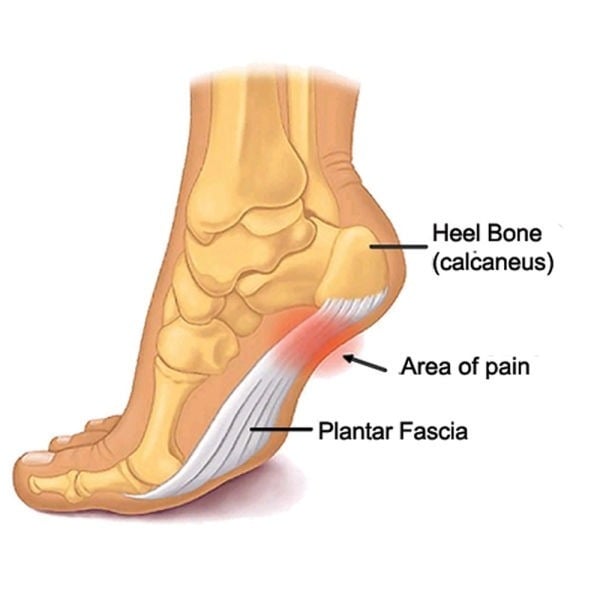
The area of pain is near the heel bone and lies on the plantar fascia.
Flat feet or your gait and running style can also contribute to the problem. The pain is often worst in the morning.
If you start to notice heel pain, try stretching, massaging the painful area, applying ice packs after running, and taking anti-inflammatory medications.
Achilles tendonitis
Achilles tendinitis, or heel bursitis, affects the Achilles tendon – the strong cord that connects the calf muscle to the heel bone. Since this part of the tendon is in contact with the foot, it can actually be the cause of heel pain after running.
Symptoms of this injury usually begin with a mild pain in the heel or along the back of the leg (where the tendon is located) after running or other physical activities. Do not ignore or take it lightly, because if left untreated, the injury can progress and become more serious.
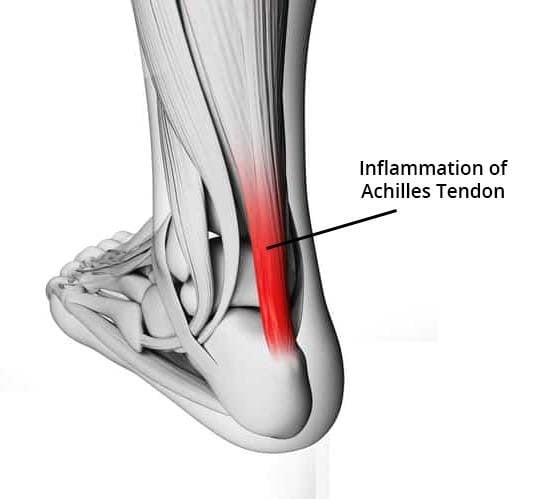
Painful area (red) due to Achilles tendonitis.
Achilles tendonitis is a common overuse injury. Pushing your body too hard—whether it's increasing distance, speed, or suddenly switching to hill running—can strain the tendon and lead to inflammation. Certain shoes can also make this condition worse.
Your risk is also higher if you have tight calves, worn-out shoes, or run on hard or uneven surfaces. As with plantar fasciitis, stretching and wearing the right shoes can go a long way in preventing and treating Achilles tendonitis.
Heel spurs
These are small bony protrusions under your heel bone. They aren't always painful, but when they are, they often feel like stabbing pain.
However, in most cases, heel spurs are not painful and are a symptom of other foot problems such as plantar fasciitis.
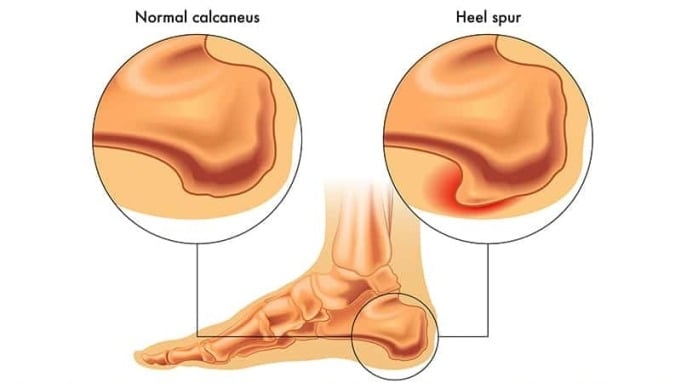
Location of the heel bone (middle - bottom), normal heel (right - top) and heel spur (left - top).
This problem usually develops over time and is the result of prolonged stress on the muscles and ligaments in the foot. This stress leads to repeated tears in the membrane covering the heel bone, allowing calcium to build up and form bone spurs.
Risk factors for heel spurs include obesity, running on hard surfaces, and wearing ill-fitting or worn-out shoes.
Posterior heel bursitis
This condition causes inflammation of the bursa, a small, fluid-filled sac that acts as a cushion between the heel bone and the Achilles tendon.
This condition is often caused by overuse, excessive friction, or pressure on the bursa, which can lead to irritation and inflammation. Running or jumping are common activities that cause this condition because they put repeated stress on the heel.
Runners with posterior heel bursitis may experience pain and tenderness at the back of the heel, just above the Achilles tendon attachment. The pain may be worse with many activities, such as running, and may also be aggravated by wearing tight shoes.
Arch muscle injury
Sometimes it can be a pulled muscle in the arch of your foot that causes heel pain. Again, overtraining by increasing the distance or intensity too quickly can cause problems as this muscle attaches to your plantar fascia and therefore causes heel pain.
Other possible causes are muscle strain or overstrain, often due to overuse or wearing ill-fitting running shoes.
A runner's plantar fasciitis can cause pain or discomfort in the arch of the foot, swelling, tenderness, and decreased running performance due to the discomfort. The pain is often felt in the arch but can also radiate down to the heel. The solution is rest or ice.
Overrunning
Many runners love to push themselves to the limit, making overuse injuries extremely common. You get this problem when you train too much, too soon, or simply do too much of the same activity without adequate rest.
Symptoms may include heel pain from overuse. This injury often feels like a constant, nagging pain that gets worse with continued exercise. Over time, it can lead to other conditions such as plantar fasciitis or Achilles tendonitis.

Overtraining can cause persistent pain in the heel.
The best approach here is prevention: wear appropriate shoes, vary your running surfaces, and follow a training plan that includes plenty of rest and recovery. If you’re experiencing symptoms, consider cutting back on your running or taking some time off to recover.
Stress fractures
A less common but more serious cause may be a stress fracture of the heel bone. Unlike a regular fracture, which occurs from a severe impact, a stress fracture occurs over time due to repeated stress.
The most common cause is running on hard surfaces such as concrete or asphalt and wearing shoes that lack proper cushioning or support. The pain starts as a minor discomfort but can quickly escalate into more severe, localized pain, especially during or after running.
The crucial treatment here is to see a medical professional immediately. Depending on the severity, doctors may recommend crutches or, in the worst-case scenario, surgery. If you suffer a stress fracture, you will definitely need to take a break from running for a while.
Hong Duy
Source link
















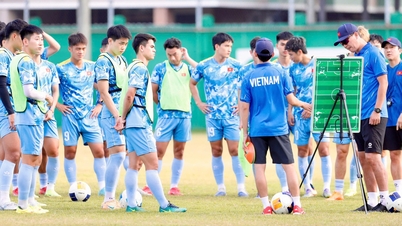














![[Video] The craft of making Dong Ho folk paintings has been inscribed by UNESCO on the List of Crafts in Need of Urgent Safeguarding.](https://vphoto.vietnam.vn/thumb/402x226/vietnam/resource/IMAGE/2025/12/10/1765350246533_tranh-dong-ho-734-jpg.webp)








































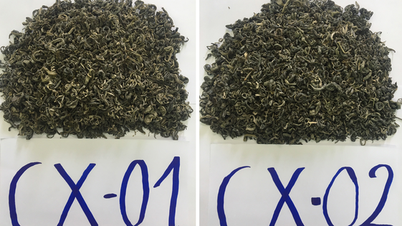

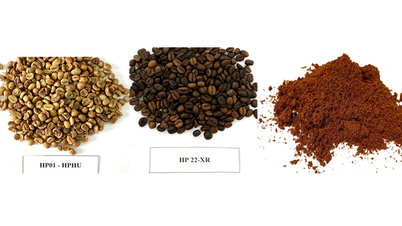






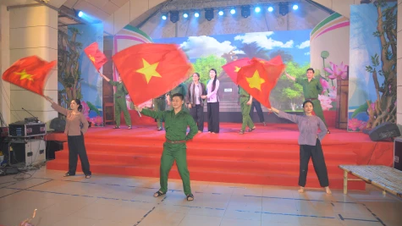




















Comment (0)